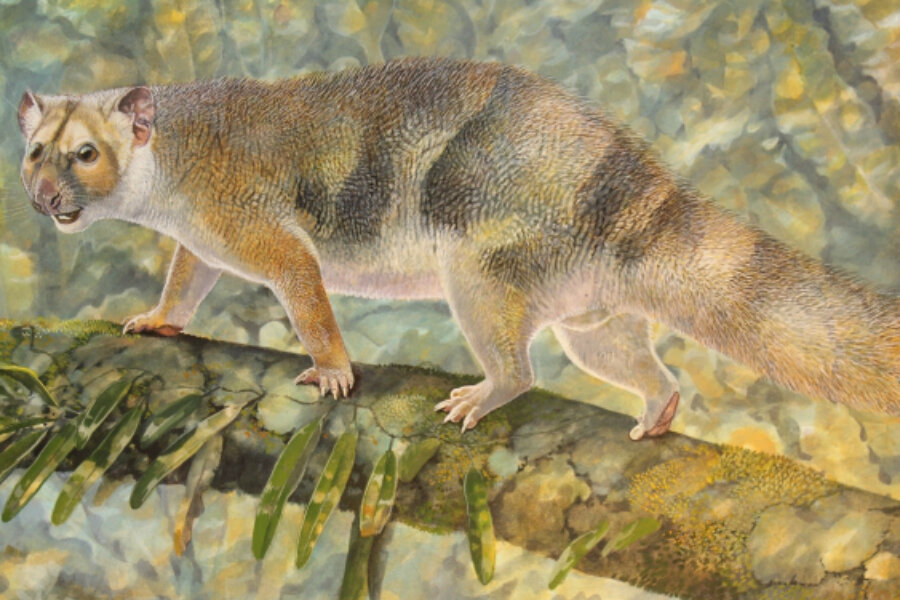Newly-discovered 'micro lion' was a feisty creature
Loading...
Don’t let its cute exterior fool you – this tiny creature was a fierce predator in its day.
Paleontologists from the University of New South Wales have announced a new species of marsupial lion that lived about 18 million years ago. Skull fragments and teeth belonging to the now-extinct creature were unearthed at the Riversleigh World Heritage fossil site in Queensland, Australia.
The diminutive Microleo attenboroughi was described this week in the journal Palaeontologia Electronica. Researchers named the creature in honor of British naturalist David Attenborough, narrator and writer of wildlife documentaries such as “Life” and “Planet Earth.”
Despite its name, the so-called “micro lion” wasn’t much of a lion at all. It was actually an ancient, carnivorous marsupial – one of many that lived in Australia during the Miocene epoch. The tree-dwelling M. attenboroughi weighed just over a pound, but it likely used its sharp molars to prey on smaller animals.
“Microleo attenboroughi would have been more like the cute but still feisty kitten of the family,” lead author and UNSW paleontologist Anna Gillespie said in a statement.
Marsupial lions, while not true big cats, were the top predators of their day. Most members, such as the leopard-sized Thylacoleo carnifex, would have dwarfed their little cousin. The Australian Museum has described T. carnifex's bite as "the most powerful bite of any mammalian predator, living or extinct." Others, such as Priscileo pitikantensis, were closer in size to modern house cats.
But despite being the smallest of its kind, M. attenboroughi was still one of the larger flesh-eaters in the ancient Riversleigh rainforest ecosystem. It most likely hunted insects, lizards, and birds.
But further details about this tiny predator’s appearance and behavior are unknown – for the time being, anyway.
“Tantalising questions about the rest of its skull and skeleton which could further clarify aspects of its lifestyle – such as whether it had an enlarged ‘killing’ thumb claw like its Pleistocene relative – must await discovery of more complete specimens,” UNSW paleontologist Mike Archer said in a statement.






